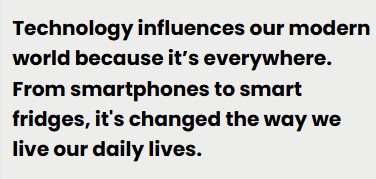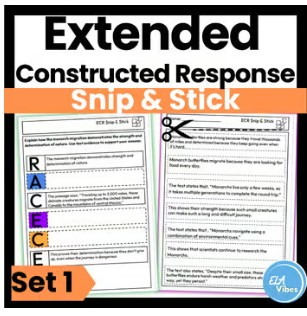Last updated on June 14th, 2025 at 11:36 pm

Why Should Teachers Use RACE/RACES?
Do your students have a blank stare with presented with a writing prompt? Many upper elementary writers struggle with text-based questions because they haven’t yet built the structured writing skills to respond clearly, confidently, and with text evidence. That’s where the RACE strategy (or RACES strategy, depending on your version) enters.
Using the RACE/RACES strategy organizes students’ thoughts into organized paragraph writing. It guides students to write in their own words while pulling from the text to justify their thinking. Best of all? It’s a low-prep strategy you can teach with a single anchor chart and a few solid lesson plans.
Let’s break it all down!
What Do the Letters in RACE – RACES Mean?
The RACE acronym gives students a step-by-step way to tackle response writing and text-based questions.
R – Restate the question
Start by turning the question into a sentence starter. This sets up the answer with clarity and shows students understand what they’re responding to. Teach students to identify the question words (who, what, when, where, why, or how) and cross them out. There is an expectation to the question words. You can add the word explain to the cross out list. The remaining words are then turned into the start of the introduction.

A – Answer the question
A direct answer comes next. This should be short and simple. Encourage students to use their own words as much as possible here.

C – Cite text evidence
This where students show the reader that their answer is correct by backing it up with evidence. Students include text evidence to prove their answer. Prompts like “According to the text…” or “The author states…” help students quote or paraphrase.

E – Explain the evidence
Now it’s time to show the “why.” Students explain how the evidence supports their answer. This deepens critical thinking and keeps them from “quote-dropping.” This is sharing with the reader why the text evidence was chosen. A possible sentence starter could be “This shows that…”

If you’re using RACES, the S stands for:
S – Sum it up
This is the conclusion. This is where students wrap up their thinking and reword their answer for emphasis.

How to Teach the RACE/RACES Strategy
This is a framework for writing. There is no special curriculum or guide to get started. A simple lesson using real examples, modeling, and a scaffolded approach can make a big difference. Here’s a step-by-step method:
Step 1: Start with one component
Students need instruction chunked. Start with restating the question and providing a mini lesson on question words and turning questions into statements. After students have mastered a component then progress to the next component.
Step 2: Start with an Anchor Chart
Create a visual that spells out each letter in the RACES strategy, with sentence stems and examples. Display it on your bulletin board or post it in your Google Classroom.
Grab your free RACES anchor chart here.

Step 3: Model It
Choose a short passage or paragraph. Read a question aloud and walk through the letter of the acronym as you think aloud your response. Emphasize how you’re selecting text evidence or answering the question and putting things into your own words.
This step-by-step guide will walk students through the process using both short and extended constructed responses. Grab here.

Step 4: Use a Graphic Organizer
Before students start writing full responses, give them a graphic organizer with space for each part of RACE/RACES. This helps break the task into chunks and reduces overwhelm.
Need a hands-on activity to teach RACE? Try this one.

Step 5: Independent Writing
Once students have the hang of it, assign them new text-based questions using articles, read-alouds, or test-prep passages. Encourage paragraph writing using the RACE/RACES acronym to guide their structure.
Tools and Techniques for RACE/RACES Instruction
Create a teacher toolkit to build RACE/RACES all year long.
- Sentence Stems or Explanations
Give students a reference sheet on possible ways to respond.
- R: Restate the question
- A: Include the answer to the question
- C: “According to the text…”
- E: “This evidence shows that…”
- S: “In conclusion….”
This gives students a jumping off point.
2. Color-Coding Responses
Have students use different colored pencils to highlight each part of their RACE paragraph. For example:
- Red for Restate
- Blue for Answer
- Green for Cite
- Purple for Explain
- Orange for Sum it Up
3. Use Real Student Samples
Display anonymous student responses and review them as a class. Have students label each part of the RACE strategy and suggest revisions. It’s a great way to think about your thinking and build writing confidence.
4. Mini RACE Lessons as Bell Ringers
Use daily lesson plans that include short prompts (ex: What lesson does the main character learn?) paired with a graphic organizer. These simple lessons reinforce the structure in 5–10 minutes of bell work.
RACE vs. RACES: What’s the Difference?
Think of RACE and RACES as two sides of the same structured-response coin. Both are effective. So, how do you decide which to use?

Both build structured response writing.
Common Mistakes and How to Fix Them
Even with practice, students may stumble. Here are three quick fixes:
- 🔹 They skip the C or E steps – Emphasize that citing evidence and explaining it is non-negotiable. Use highlighters to color-code both parts.
- 🔹 They copy text word-for-word – Revisit the importance of putting ideas into their own words. Use short paraphrasing exercises before jumping into full responses.
- 🔹 They write in a list format – Remind students that this is paragraph writing, not bullet points. Have them use transition words to make responses flow smoothly.
Conclusion: RACE/RACES
✅ The RACE/RACES strategy is one of the most effective ways to teach paragraph writing in response to text-based questions.
✅ It strengthens key writing skills like citing text evidence, restating questions, and using own words for analysis.
✅ The strategy works across subjects, including ELA, science, and social studies, making it a universal tool.
✅ With just an anchor chart, a few graphic organizers, and strong lesson plans, you can build student confidence and performance on both short and extended constructed response writing.
✅ Whether you use RACE or RACES, the goal is the same: help students write with purpose and proof.
Grab these no-prep RACE activities right here in the ELA Vibes RACES Strategy Resource Collection.
Additional Resources to Add to Your Toolbox

Favorite Amazon Items to Support RACE
This post contains affiliate links, which means I may earn a small commission at no extra cost to you. I only share resources I truly love and use myself—thanks for supporting my corner of the teacher world!

